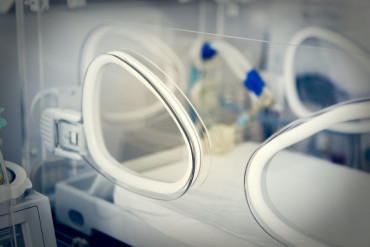Was My Baby’s PICC Line Injury Medical Malpractice?

Premature babies start life off with challenges; just how many depends on how early they are born. For example, some preemies need assistance breathing, eating, and taking in fluids. Others may require other medical treatments, including medications. For those reasons, the medical team caring for a premature newborn may recommend using a PICC line. A peripherally inserted central catheter (PICC line) is frequently used on premature babies in the neonatal intensive care unit (NICU). It allows doctors or nurses to administer medications, nutrition, or other fluids intravenously without repeatedly injecting the baby.
What Is A PICC Line?
A PICC line is a flexible plastic tube inserted into an infant’s arm or leg. After that, it is threaded through the vein until it reaches a large vein close to the heart. Once there, the PICC line can deliver medications or nutrition to the baby. The whole procedure usually takes one to two hours.
The PICC line is much like a peripheral IV, but the tube is much longer, and it can stay in place longer. Premature babies have tiny, fragile veins, and an IV only lasts up to three days. Using a PICC line can last several weeks, so it’s often better even though the insertion is more complicated.
After the PICC line is in place and it’s secured so it won’t become dislodged, the entire area is dressed with sterile bandages to help lower the risk of infection. Doctors will then have an x-ray of the chest taken to make sure that the PICC line is in the right place.
When Is A PICC Line Used On A Baby?
When a baby needs to have IV access for some time, a PICC line is often recommended. It reduces the number of times the baby will be “stuck” with needles, as it can stay in place for days or weeks. Some of the common indications that lead to a PICC line being recommended for a baby include:
- Baby’s birth weight is less than 2.2 lbs. (1,000 grams)
- IV parenteral nutrition and fluids required for five or more days
- Limited peripheral access
- A course of antibiotics lasting more than five days
- A need that is based on a specific diagnosis (for example, babies with gastrointestinal disorders or congenital heart defects)
What Are The Risks Associated With A PICC Line?
Most medical professionals who insert PICC lines have significant experience, and the insertion procedure is safe. However, as with any medical procedure, some risks must be considered. They include:
- There is a small risk of infection that increases the longer the PICC line stays in place
- It can take several attempts to get the PICC line inserted properly
- Blood vessels can break from the catheter
- A wearing away of the wall of the blood vessel from friction with the catheter, allowing medications or IV fluids to leak into nearby areas of the body
- A wearing away of the heart wall, which can lead to compromised heart function and life-threatening bleeding
Who Is Liable For Injuries From PICC Line Errors?
As with all medical treatments, hospitals and medical professionals have a duty to adhere to a standard of care for IV therapies, including PICC lines. The standards of care include the following:
- Following the proper procedures for PICC line insertion and placement
- Applying transparent, sterile dressing over the insertion site
- Properly securing the IV catheter to the arm or leg
- Regular monitoring and assessment of the insertion site for swelling, coolness, or change in color
- Monitoring for any sign of infiltration
- Ensuring the proper flow or infusion of IV fluids
If any of the above standards of care are violated, and the baby suffers injuries, the responsible party (including the hospital or medical facility) may be held liable.
Do You Suspect PICC Line Negligence?
If you suspect that medical negligence occurred during a PICC line procedure on your baby, you must contact an experienced medical malpractice lawyer right away. Without the proper medical knowledge, it can be challenging to identify if or when the negligence occurred. At Ross Feller Casey, we have a team of leading medical doctors on staff who will review medical records and determine if it is a case of malpractice.
Additionally, our birth injury attorneys have experience helping families like yours with PICC line malpractice cases. In one case, we were able to help the family of a premature baby whose arterial line was mismanaged, resulting in the amputation of her arm below the elbow, recover compensation for the infant’s injuries. While no amount of money fixes such a mistake, getting the compensation you deserve will help ease the financial burden caused by those injuries.
Contact the law office of Ross Feller Casey to arrange your free consultation with one of our medical malpractice attorneys to discuss your case. You will not be charged for anything until your case is settled or won in court, so there is nothing to lose.
Disclaimer: Ross Feller Casey, LLP provides legal advice only after an attorney-client relationship is formed. Our website is an introduction to the firm and does not create a relationship between our attorneys and clients. An attorney-client relationship is formed only after a written agreement is signed by the client and the firm. Because every case is unique, the description of awards and summary of cases successfully handled are not intended to imply or guarantee that same success in other cases. Ross Feller Casey, LLP represents catastrophically injured persons and their families in injury and wrongful death cases, providing legal representation in Pennsylvania and New Jersey.





